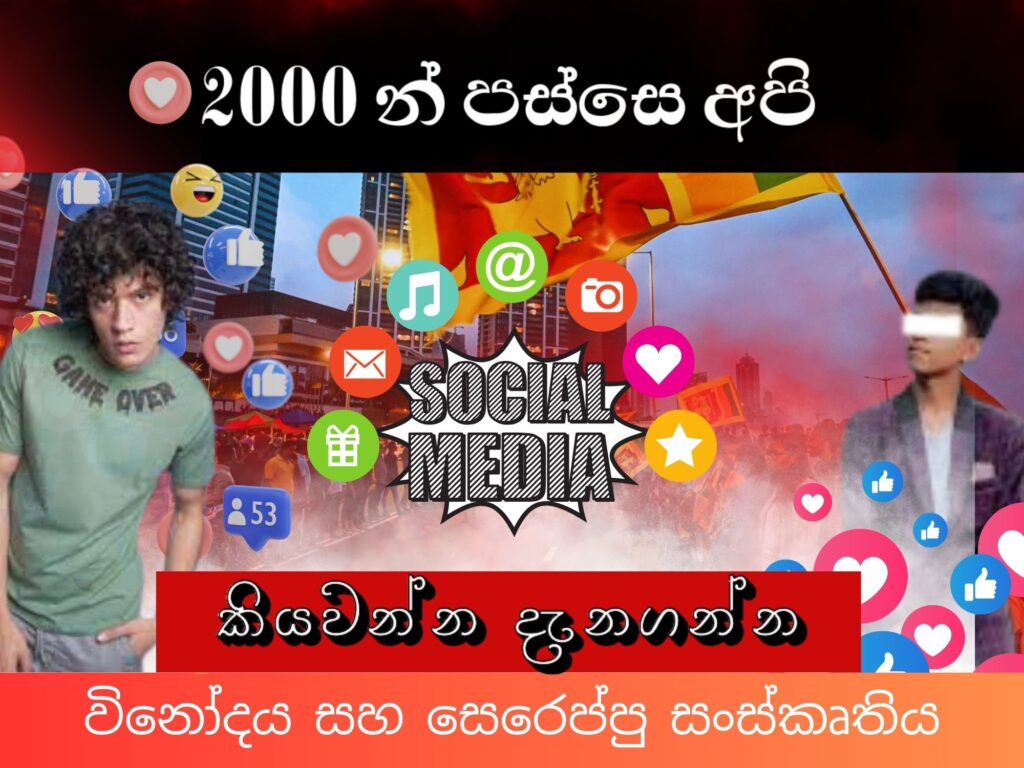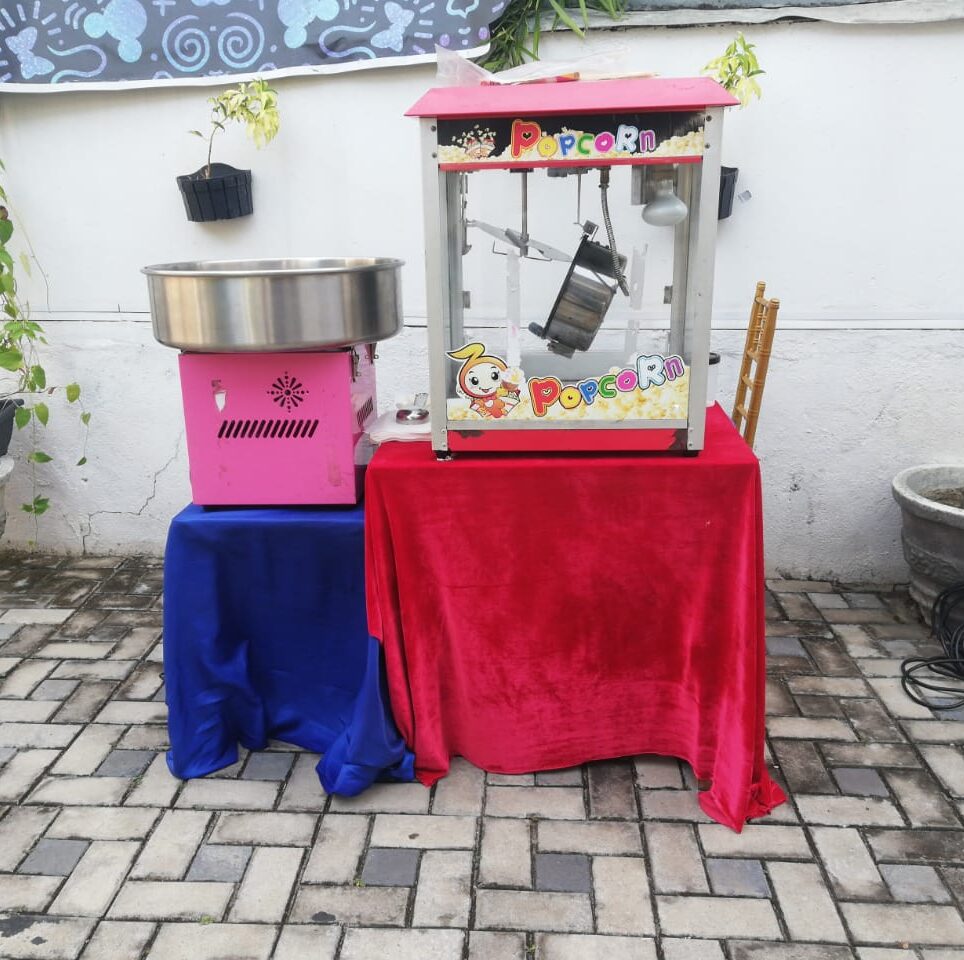2000 න් පසු ලංකාවේ නව තරුණ පරම්පරාව සංස්කෘතිය සමඟ වෙනස් වූයේ ඇයි?
2000 න් පසු ශ්රී ලංකාවේ තරුණ පරපුරේ සංස්කෘතිය දැඩිව වෙනස්වීම පිළිබඳව අවධානය යොමුවිය යුතුය. මෙයට බොහෝ කරුණු බලපා ඇත.
1. තාක්ෂණය සහ සමාජ මාධ්ය ව්යාප්ත වීම
2000 න් පසු ශ්රී ලංකාවේ තාක්ෂණය දැඩි වර්ධනයක් අත්විඳින්නට පටන් ගත්තේය. මූලිකව, මොබයිල් දුරකථන, අන්තර්ජාලය සහ සමාජ මාධ්ය භාවිතය ඉතා වේගයෙන් ව්යාප්ත විය. Facebook, Instagram, TikTok වැනි සමාජ මාධ්ය වෙත ලාංකික තරුණයින් ඇබ්බැහිවෙමින්, විශාල මාට්ටමේ සංස්කෘතික වෙනස්කම් සිදු විය. පසුගිය සමාජයක පවතින සීමා, විශ්වාස, ගෞරවය, සන්සුන්කම වැනි අංග බොහෝ තරුණයින්ගේ ජීවිත වලින් දුරස් විය.
2. ගෝලීය සංස්කෘතියට මැදිවීම
අන්තර්ජාලය හරහා, ශ්රී ලංකාවේ තරුණයින් විදේශීය ජීවන රටාවන්, නව ව්යාපාර අදහස්, විනෝදාස්වාද ආකාර, විලාසිතා, සංගීතය, චිත්රපට සහ ආහාර සංස්කෘති ඇතුළු ගෝලීය සංස්කෘතියට තවදුරටත් සමීප විය. විශේෂයෙන්, කොරියානු (K-pop, K-drama) සහ බටහිර සංගීත සංස්කෘති ලංකාවේ විශාල බලපෑමක් ඇති කළේය.
3. අධ්යාපනයේ වෙනස්කම් සහ වෘත්තීය මාර්ග වෙනස් වීම
2000 න් පසු අධ්යාපනය තොරතුරු තාක්ෂණය, ව්යාපාර කළමනාකරණය, නිර්මාණශීලී කලා වැනි නව අංශ සඳහා විවෘත විය. නව තාක්ෂණික අංශ සඳහා රැකියා සෑදීමත් සමඟ, තරුණයින් සම්ප්රදායික රැකියා සඳහා පමණක් නොව, freelancing, digital marketing, e-commerce, influencer culture වැනි ක්ෂේත්ර වලටත් ඇදෙමින් තිබේ.
4. සමාජයීය සබඳතා සහ පවුල් සබඳතා වෙනස් වීම
පැරණි පරපුරේ පවුලේ අධිපති ක්රමය, ආචාර සම්ප්රදාය, ගරු කිරීම, ආගමික බැඳීම වැනි සම්ප්රදායන් අද තරුණ පරපුර මත ඉතාම අවම බලපෑමක් ඇති කරයි. තාක්ෂණය සහ ගෝලීය ජීවිත රටා හේතුවෙන්, විවාහයට ප්රමුඛතාවය, පවුල් සංස්කෘතිය, සහ ජීවිතය ගත කරන ආකාරය වෙනස්විය. තරුණයින් තනිව ජීවත් වීමට, විදේශ ගමන් කිරීමට, සහ විවිධ සංකල්ප සහිත ජීවිත රටාවක් ඇති කිරීමට යාම බොහෝවෙයි.
5. ආර්ථික අර්බුදය සහ රටේ වාතාවරණය
2000 න් පසු ශ්රී ලංකාවේ ආර්ථික අර්බුද, දේශපාලන අස්ථායීතාවය, සහ රැකියා අවස්ථා හිඟය තරුණ පරපුර ඉතාම සෘණාත්මකව බලපා ඇත. මූලිකව, 2019 සිට ආර්ථික අර්බුදය, කොවිඩ්-19 වසංගතය, සහ 2022 ගෝලීය ආර්ථිකයේ බිඳ වැටීමේ බලපෑම යටතේ තරුණයින්ගේ රටට පිළිබඳ විශ්වාසය කඩා වැටුනි. විශාල පිරිසක් විදේශ ගමන් කිරීමට, එනම් අධ්යාපනය, රැකියාව, හෝ අත්දැකීම් සඳහා යාමට සැලසුම් කරයි.
6. සමාජ මාධ්ය ක්රියාවලිය සහ “විරාම” සංස්කෘතිය
තරුණයින් අතර influencer culture, self-expression, memes culture, සහ self-branding වැනි නව සංස්කෘතික විප්ලවයක් 2000 න් පසු හට ගත්තේය. TikTok, Instagram Reels, YouTube Shorts වැනි කෙටි වීඩියෝ හරහා සම්ප්රදායික වැඩපිළිවෙළවලට විරුද්ධව නව මතවාද ඉදිරිපත් කිරීම, නව හැසිරීමේ ආකාර, සහ “විරාම” සංස්කෘතිය ව්යාප්ත විය.
7. විනෝදය සහ සෙරෙප්පු සංස්කෘතිය
පැරණි පරපුරේ විනෝදය සන්සුන්, සරල සහ ප්රාදේශීය මට්ටමේ පවතින අතර, නව පරපුරේ විනෝදය බොහෝවිට high-tech, social media-based, virtual entertainment වශයෙන් ඇතිවිය.
අනාගතය – ශ්රී ලංකාවේ තරුණ පරපුරේ සංස්කෘතිය කොතැනටද?
අනාගතයේදී, ශ්රී ලංකාවේ තරුණ පරපුර තවත් ගෝලීය හෝ “Digital Nomad” ජීවිත රටාවන් දෙසට යාමට ඉඩ ඇත. තාක්ෂණය, ආර්ථිකය, සහ දේශපාලනය යටතේ මෙම සංස්කෘතික විප්ලවය දිගටම පැවැත්විය හැක.
අවසන් අදහස
2000 න් පසු ශ්රී ලංකාවේ තරුණ පරපුරේ සංස්කෘතිය තාක්ෂණය, ගෝලීය ප්රභල බලපෑම්, සමාජ මාධ්ය, ආර්ථිකය, සහ සන්සුන් පවුල් සබඳතා යටතේ විශාල වෙනස් විය. තරුණ පරපුර නව අදහස්, විශ්වාස, සහ ජීවන රටා සමඟ ඉදිරියට යන අතර, මෙය සමාජයේ සාර්ථක සංස්කෘතික විප්ලවයක්ද, නොමනා පාරිසරික විප්ලවයක්ද? යන ගැටළුව අනාගතයේදී පැහැදිලි වනු ඇත.

Why Did Sri Lanka’s Youth Culture Change After 2000?
After the year 2000, Sri Lanka’s younger generation underwent a significant cultural shift. Several factors contributed to this transformation, shaping their mindset, lifestyle, and aspirations in a way that is vastly different from previous generations.
1. The Rise of Technology and Social Media
One of the biggest influences on Sri Lankan youth after 2000 was the rapid advancement of technology and the widespread use of social media. The introduction of mobile phones, the internet, and platforms like Facebook, Instagram, and TikTok drastically changed the way young people interacted with the world. Unlike older generations who relied on traditional forms of communication and entertainment, today’s youth are deeply immersed in the digital world. This shift led to new ways of thinking, new aspirations, and a departure from conventional cultural norms.
2. Exposure to Global Culture
With increased internet access, Sri Lankan youth became more exposed to global trends in fashion, music, entertainment, and lifestyle. The influence of K-pop, Hollywood, and international pop culture became stronger, leading to the adoption of foreign styles, values, and ways of self-expression. While older generations valued traditional customs and norms, the younger generation started to embrace individualism, self-expression, and modern lifestyles.
3. Changes in Education and Career Paths
In the past, traditional career choices like medicine, engineering, and government jobs were the top priorities for Sri Lankan youth. However, after 2000, education systems evolved, and young people started exploring new career paths such as IT, digital marketing, creative arts, and entrepreneurship. The rise of freelancing, remote work, and influencer culture further encouraged young people to move away from conventional job structures.
4. Transformation of Social and Family Dynamics
Traditional family structures, respect for elders, religious beliefs, and hierarchical systems began to lose their dominance among younger generations. Unlike in the past, when family values played a significant role in decision-making, today’s youth prefer independence and personal freedom. Many are open to new ideas regarding relationships, marriage, and lifestyle choices, leading to a shift in societal norms.
5. Economic Struggles and Political Instability
Since 2000, Sri Lanka has faced severe economic challenges, political instability, and a lack of job opportunities. Events like the 2019 Easter Attacks, the COVID-19 pandemic, and the 2022 economic crisis significantly affected the mindset of young Sri Lankans. Many lost trust in the country’s system and began seeking opportunities abroad for education, work, and a better quality of life. The desire to migrate has grown stronger, with many prioritizing careers that allow them to work remotely or move overseas.
6. The Rise of Social Media Culture and “Viral Trends”
Platforms like TikTok, Instagram Reels, and YouTube Shorts have introduced a new cultural movement among young Sri Lankans. Self-expression, meme culture, influencer marketing, and digital branding have become popular ways for youth to interact and build careers. Unlike the older generation, which valued privacy, today’s youth openly share their lives online, which has also led to debates on privacy, online ethics, and cyber safety.
7. Shift in Entertainment and Lifestyle Choices
Past generations found entertainment in traditional festivals, cultural events, and simple gatherings. However, the new generation leans towards high-tech entertainment, including video games, online streaming, and digital content creation. The entertainment industry itself has evolved to cater to a younger, more tech-savvy audience, making traditional forms of fun less attractive.
What’s Next for Sri Lanka’s Youth?
Looking ahead, Sri Lanka’s younger generation is expected to become even more globally connected, with many seeking opportunities beyond the island. As the economy, technology, and global influences continue to evolve, youth culture in Sri Lanka will also adapt to new trends. However, whether this transformation is positive cultural growth or a loss of traditional values remains a topic of debate.
Final Thoughts
The cultural shift in Sri Lanka’s younger generation after 2000 can be attributed to technology, globalization, social media, economic challenges, and changing family dynamics. The youth of today are more independent, digitally connected, and open to global influences, making them vastly different from previous generations. The future will reveal whether this transformation leads to a more progressive society or a disconnect from traditional values.



Leave a Comment